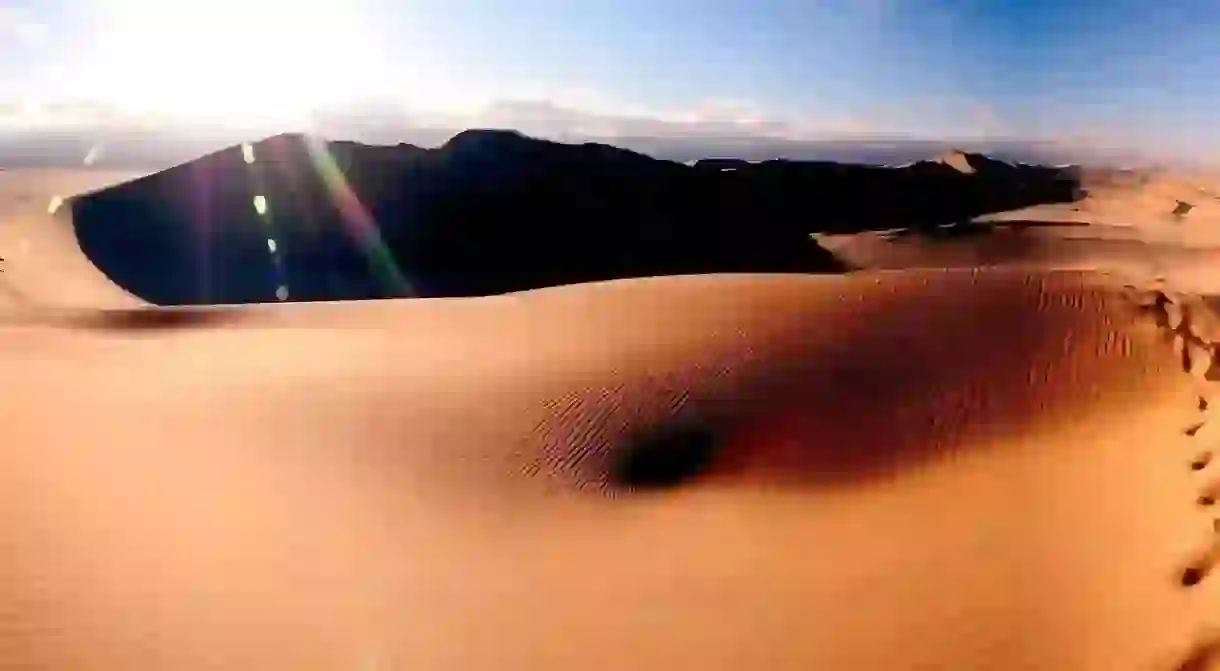A Guide to Sustainable Safaris in Namibia

Sustainable tourism is big business in Namibia. In this stark yet stunning part of the world, sand dunes are sacred, wildlife has the right of way, and vehicles that veer off the beaten track pose a danger to all – even the crusty surface of the semi-desert landscape. Namibia has dug deep to protect its outstanding natural heritage, making it easy for travellers to choose sustainable safari options.
Why go to Namibia?
Remarkable natural attractions such as the Fish River Canyon, Etosha National Park, the Kalahari Desert, and the Namib Desert that runs the entire length of the country’s coastline, are just a few reasons to visit this unique country. Add a complex ecology, surprisingly large numbers of game, Germanic architecture, and Sossusvlei lake, one of the world’s most visited photographic destinations, and intrepid eco-travellers shouldn’t hesitate to pack their bags.
Etosha National Park, Namibia, +264 81 180 0016

Sleep soundly, tread lightly
While there are a good variety of lodges and guest houses in Namibia that offer eco-friendly accommodation, there are also those that have just put up a few solar panels and claim to have ‘gone green’. Sustainability is about much more than going off the grid, so do some research before booking a spot. Eco Awards Namibia is a good resource for environmentally conscious travellers, as its sustainable tourism certification programme promotes accommodation establishments and tour operators that utilise resources selectively and carefully, as well as actively adopt reducing, recycling and reusing.
Choose a community-owned tourism project
It is unfortunate that many so-called cultural tours in Africa have become little more than a well-acted show with the aim of putting a big dent into innocent tourists’ wallets. Choosing a tour in a community-owned settlement located in a conservancy should negate this commercial money-making factor, and ensure a more genuine cultural encounter.

The Himba of the Kunene region in northwest Namibia, and the Ju’/hoansi San in the northeast are both communal conservancies that are wholly owned by the indigenous tribes. Here, the local communities take full responsibility for the conservation and management of their land and wildlife in order to generate income for themselves through sustainable farming and tourism. By touring communities such as these, visitors can be assured they are directly supporting and compensating the local people. Try travel company Responsible Travel for tour ideas.
Cuddle a big cat?
While it may sound cute to cuddle a lion cub, visitors should ask themselves; ‘Is this really necessary?’ Private wildlife reserves and sanctuaries in Namibia all do an excellent job of protecting, rehabilitating and releasing big cats, and the country is renowned for its impressive conservation record. But where should the line be drawn between ethical and authentic and just anther great photo opportunity?

While some reserves have outlawed the handling of big cats, others still permit hands-on interaction, but visitors should always bear in mind that these creatures are wild animals, and not pets. At the end of the day, it’s a personal choice but consider organisations such as Africat. This centre rescues and rehabilitates big cats before setting them free in a protected reserve to hone their hunting skills and become self-sustaining. So instead of walking with a cheetah, visitors can track a radio-collared leopard as they are being prepared to be reintroduced into the wild.
Never follow the road less travelled
In Namibia, with its age-old sand dunes and unique desert adapted animals, veering off the beaten path has several disadvantages – the first being a traveller’s safety. Many vehicles have met their fate after slamming into enormous potholes or meeting with an irate elephant – and there are plenty of mangle desert wrecks to prove this.

Environmentally, the impact of tyre treads can also spell ecological disaster for the landscape. Tyres that lash into the crusty surface of the desert sand leave scars that will last for decades, while quad bikes and off-road vehicles can instantly destroy sensitive plant and animal life that live less than 10cm (4 inches) under the surface of the dunes. When booking a dune safari, stick to accredited companies such as the ones below that belong to the Quad-biking Association of Namibia and, first and foremost, protect and promote the environment in which they operate.

Dare Devil Adventures, B2 – Long Beach, Swakopmund, Namibia, +264 64 220 158
Desert Explorers Adventure Centre, Swakopmund, Namibia, +264 64 406 096
Dune 7 Adventures, Namibia, +264 81 626 1714













